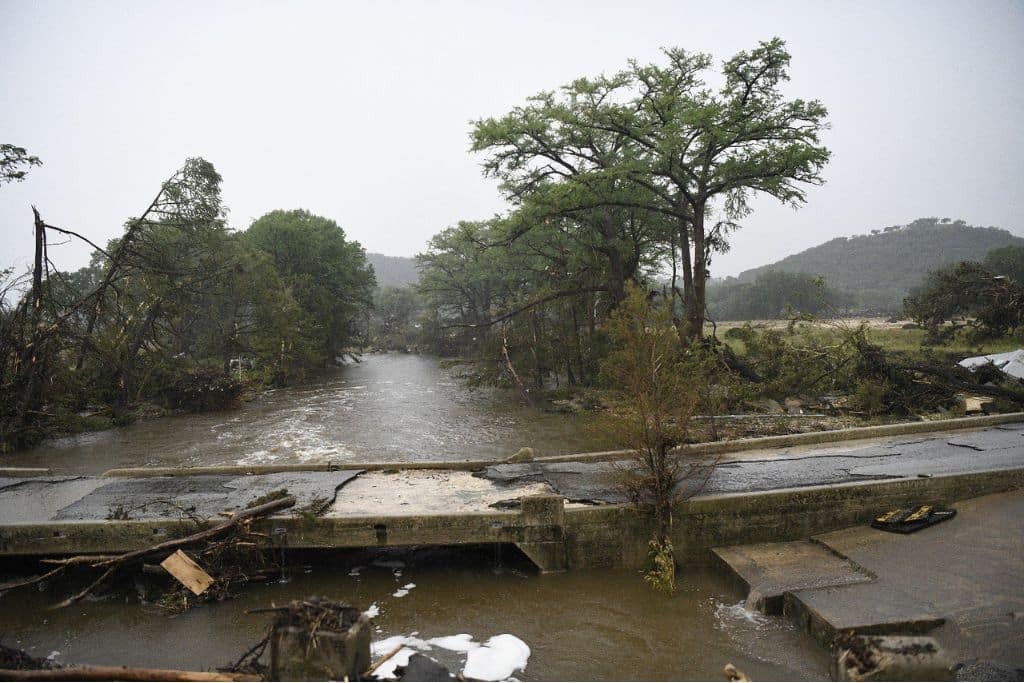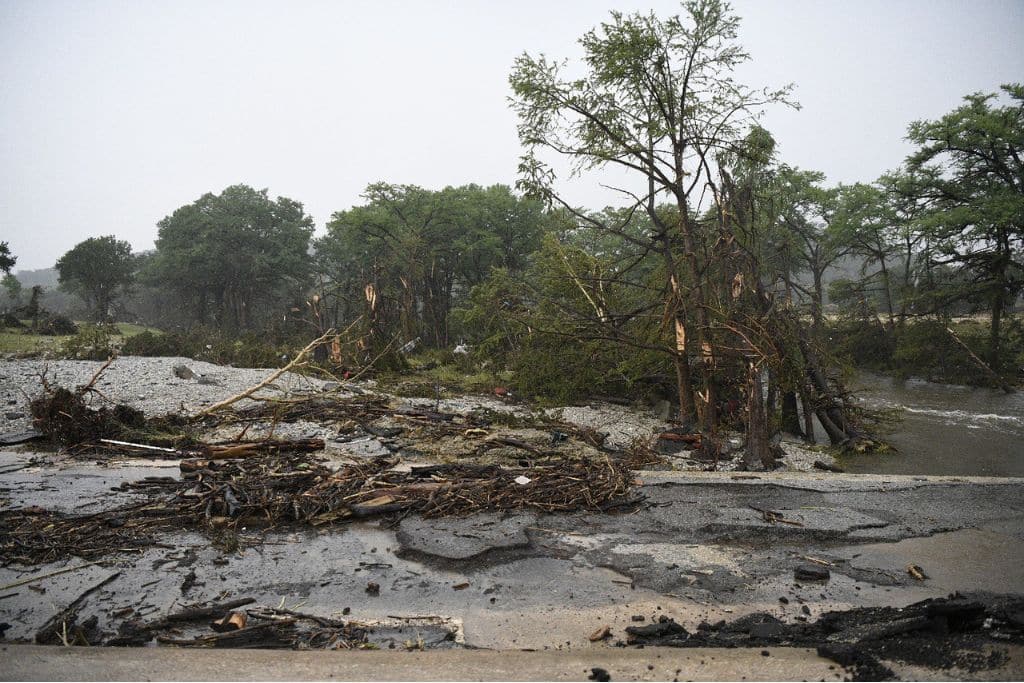ClimaMeter found that similar meteorological conditions in Texas, specifically in the Hill Country between San Antonio and Austin, are now up to 2 mm/day wetter and 1.5C warmer than they were in the past.
—
Torrential rains associated with a deadly flood that claimed over 100 lives across six counties in central Texas on Independence Day were intensified by human-made climate change, a new study has concluded.
The disaster unfolded rapidly on Friday, as exceptional downpours in Texas Hill Country increased the water level of the Guadalupe River by 26 feet (8 meters) within 45 minutes, bursting its banks and destroying everything in its path. Over 10 inches (254 mm) of rain fell across the region in just a few hours.
The study was conducted by ClimaMeter, a rapid framework for understanding extreme weather events in a changing climate funded by the European Union and the French National Centre for Scientific Research. By comparing past (1950-1986) and present (1987-2023) weather patterns in the region, researchers concluded that natural variability alone cannot explain the catastrophic floods and pointed at climate change as one of the main drivers of the event.
Specifically, they found that temperatures have increased up to 1.5C southern to the flood-affected area, while present-day conditions are up to 2 mm/day – or up to 7% – wetter in parts of central Texas and especially along the corridor from San Antonio to Austin. These changes, the study said, have created an environment more favorable to sudden, high-impact rainfall events.
Researchers also acknowledged that factors not taken into account for this study, such as land use change, urban sprawl, and warning system failutres, may have amplified the floods.
“The devastating floods in Texas reflect the growing impact of a warmer, more humid atmosphere fueled by climate change,” said Mireia Ginesta from the University of Oxford. “To protect communities now, it is essential to maintain strong support for weather forecasting and scientific research, ensuring accurate forecasts and effective early warnings that can save lives.”

The findings align with the Intergovernmental Panel on Climate Change’s conclusions that climate change is intensifying the water cycle, leading to more intense rainfall and associated flooding.
A warmer atmosphere, heated by fossil fuel emissions, can hold more moisture, resulting in heavier downpours. For every 1C that Earth’s atmospheric temperature rises, the amount of water vapor in the atmosphere can increase by about 7%.
As climate scientist Andrew Dessler put it: “The role of climate change is like steroids for the weather – it injects an extra dose of intensity into existing weather patterns.”
Featured image: World Central Kitchen/Flickr.
More on the topic: Scrutiny Over Trump Cuts to Emergency Response and Weather Forecasting Agencies Mounts as Texas Flood Death Toll Climbs to 78
This story is funded by readers like you
Our non-profit newsroom provides climate coverage free of charge and advertising. Your one-off or monthly donations play a crucial role in supporting our operations, expanding our reach, and maintaining our editorial independence.
About EO | Mission Statement | Impact & Reach | Write for us








